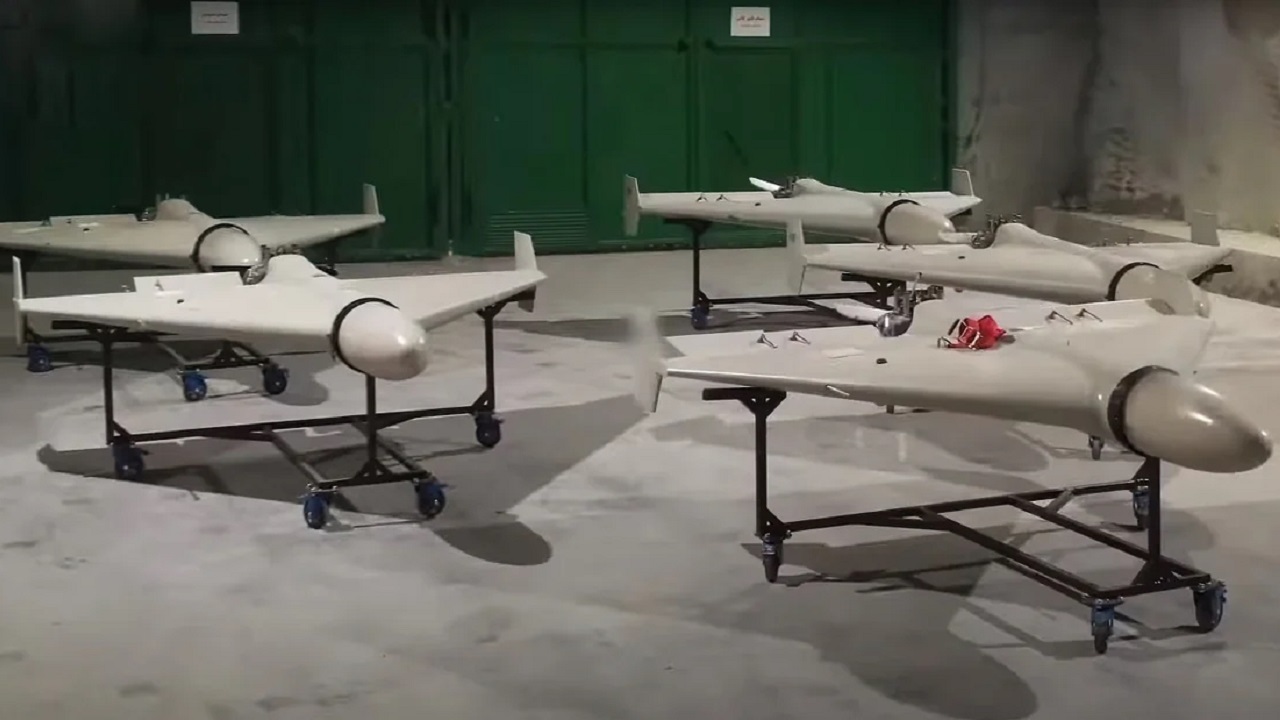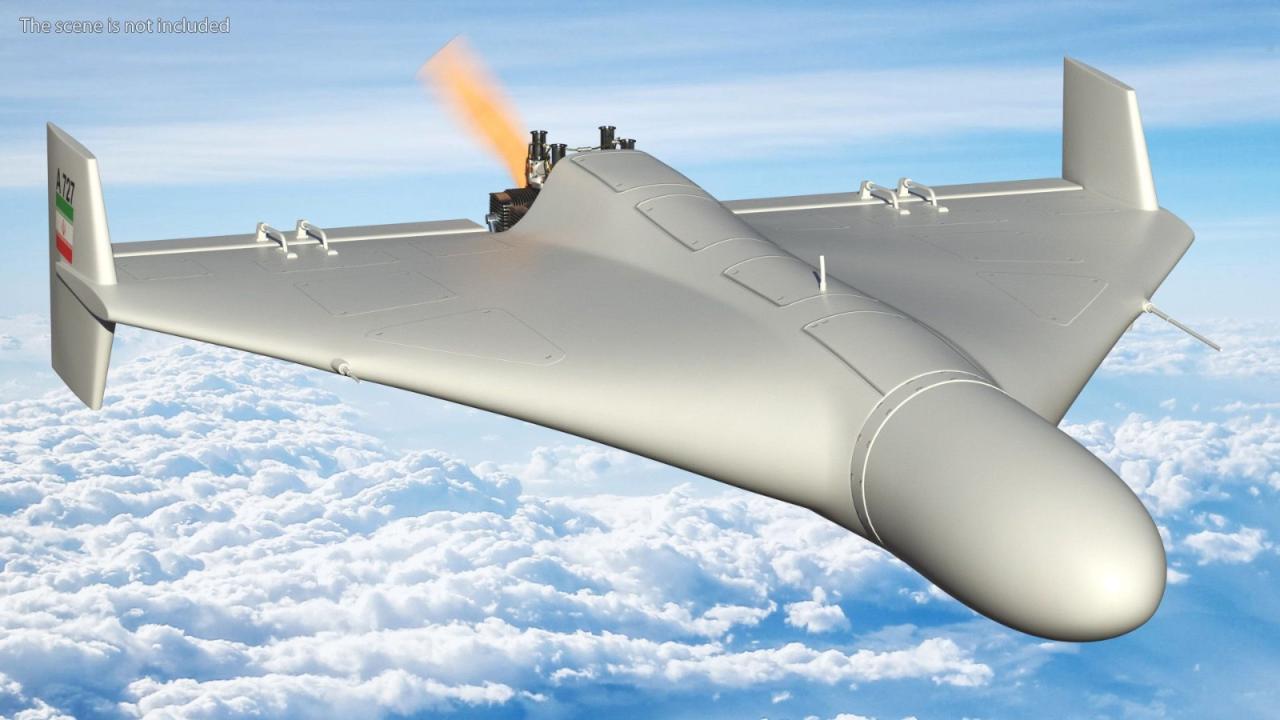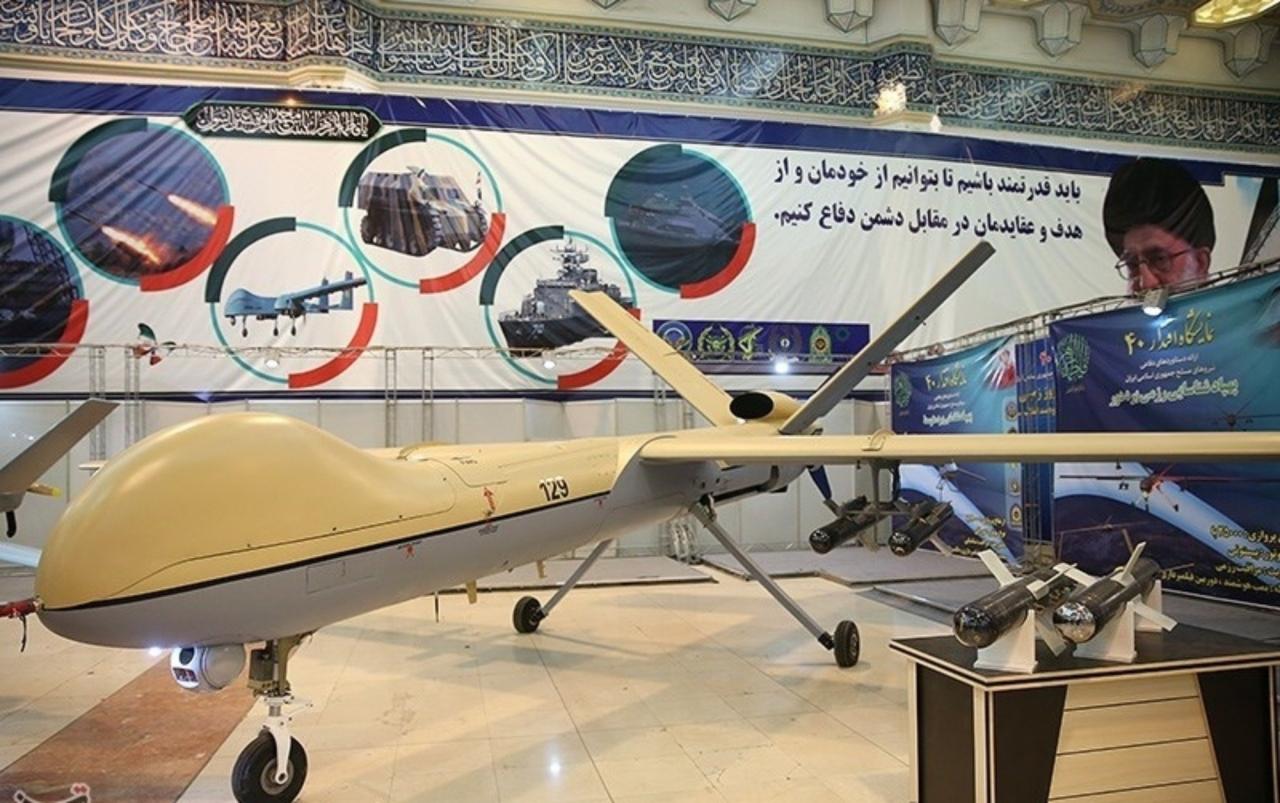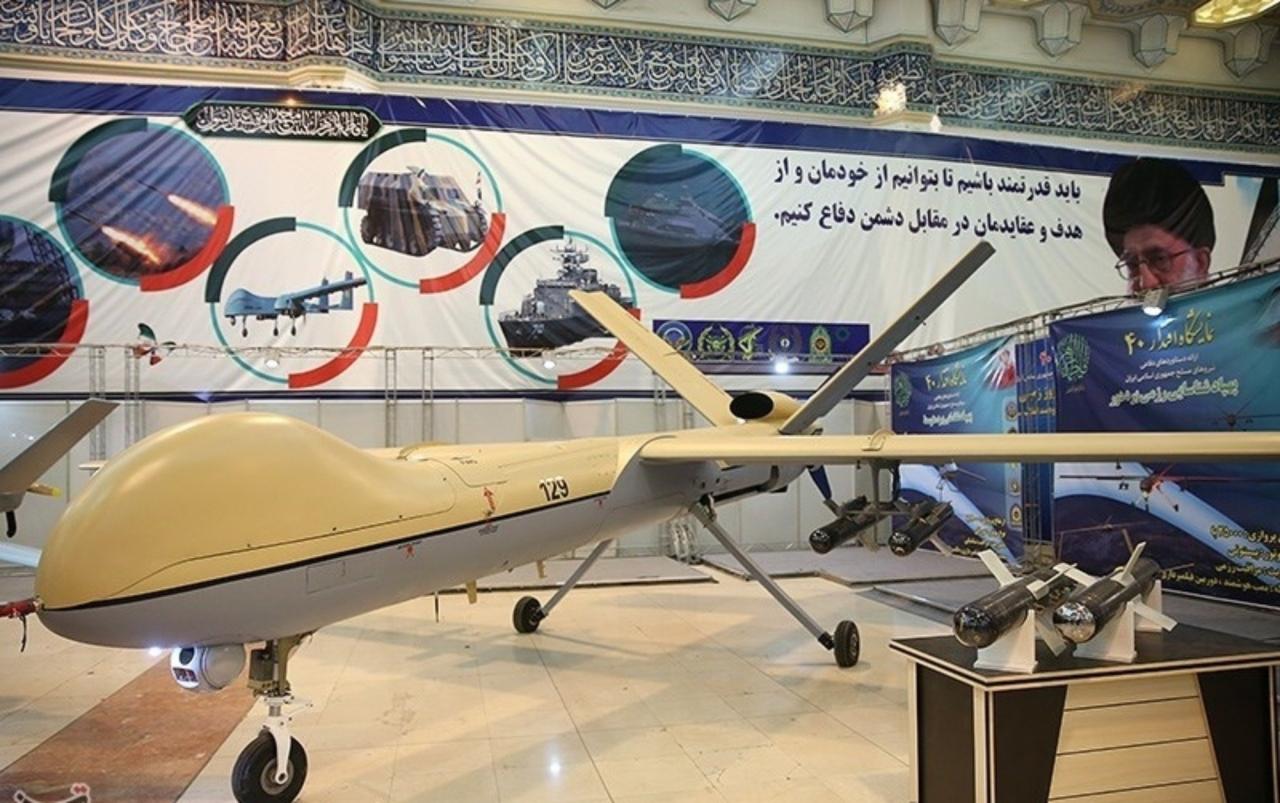Shahed drones have emerged as a significant player on the modern battlefield, prompting intense scrutiny and debate. This analysis delves into the technical specifications, operational capabilities, combat effectiveness, countermeasures, manufacturing, and geopolitical implications of these unmanned aerial vehicles (UAVs). We will explore their design, deployment, impact on conflict, and the international response to their proliferation.
From their relatively simple design to their surprisingly effective use in various conflicts, the Shahed drone represents a paradigm shift in asymmetric warfare. Understanding its capabilities, limitations, and the strategies employed to counter it is crucial for comprehending contemporary military dynamics and international security challenges. This exploration aims to provide a balanced and informative overview of this increasingly important piece of military technology.
Shahed Drone: A Comprehensive Overview

The Shahed drone, also known as the Shahed-136 or Geran-2, has emerged as a significant player in modern conflict, prompting global discussions on its technical capabilities, operational effectiveness, and geopolitical implications. This overview delves into the various facets of this unmanned aerial vehicle (UAV), examining its design, deployment, combat performance, countermeasures, manufacturing, and broader impact.
Shahed Drone Technical Specifications
The Shahed drone’s design incorporates a relatively simple, yet effective, architecture. Different variants exist, with slight variations in specifications. Precise details remain classified, but publicly available information allows for a general understanding of its construction and capabilities.
| Specification | Shahed-131 (Estimate) | Shahed-136 | Shahed-136 (Modified Iranian Version) |
|---|---|---|---|
| Wingspan | 2.5 meters | 3.5 meters | 3.5 meters |
| Length | 3.5 meters | 3.5 meters | 3.5 meters |
| Weight | 200 kg | 200 kg | 200 kg |
| Payload Capacity | 40 kg | 40 kg | 50 kg |
| Materials | Composite materials | Composite materials, likely including carbon fiber | Composite materials |
| Engine Type | Small, likely piston engine | Small, likely piston engine | Small, likely piston engine |
| Fuel Capacity | Variable, depending on variant | Variable, depending on variant | Variable, depending on variant |
| Flight Duration | Approximately 1-2 hours | Approximately 1-2 hours | Approximately 2-3 hours |
| Navigation | GPS, inertial navigation system | GPS, inertial navigation system | GPS, inertial navigation system, possibly improved algorithms |
The propulsion system is relatively basic, relying on a small internal combustion engine. Flight duration is limited by fuel capacity. Navigation relies heavily on GPS, though inertial navigation systems likely provide backup.
Shahed Drone Operational Capabilities

Shahed drones are typically launched from land-based platforms, often requiring minimal infrastructure. Recovery mechanisms are nonexistent, as they are designed for one-way missions. Their range and endurance are affected by factors such as wind, altitude, and payload weight.
Payload options primarily include high-explosive warheads. Targeting is achieved through pre-programmed GPS coordinates, though some reports suggest the possibility of mid-course corrections. The application is primarily for precision strikes against high-value targets.
Shahed Drone Combat Effectiveness
The Shahed drone’s effectiveness is a subject of ongoing debate. While its low cost and ease of production contribute to its operational advantages, its precision and survivability are comparatively lower than more sophisticated UAVs. It has shown success in overwhelming air defenses through sheer numbers, but its vulnerability to countermeasures remains a significant factor.
- Successful strikes against Ukrainian energy infrastructure and military assets have been reported.
- Failures have also been documented, with many drones intercepted or failing to reach their targets.
- The drone’s effectiveness is highly dependent on the quality of intelligence and targeting data.
Shahed Drone Countermeasures
Several countermeasures have proven effective against Shahed drones. These leverage a combination of detection, disruption, and destruction techniques.
- Radar systems can detect the drone’s presence.
- Electronic warfare systems can jam GPS signals, disrupting navigation.
- Anti-aircraft artillery and missile systems can be used to physically destroy the drone.
- Drone-specific countermeasures are being developed, such as directed energy weapons.
A hypothetical countermeasure system could integrate radar detection, electronic warfare jamming, and a network of short-range air defense systems to create a layered defense. This would require coordination and real-time data sharing among various systems.
Shahed Drone Manufacturing and Acquisition

The manufacturing process of Shahed drones is believed to involve a relatively straightforward assembly process, relying on readily available components. Iran is the primary manufacturer, though there are reports of potential assistance from other countries or entities.
The supply chain likely includes domestic and international sources for various components. The exact details remain opaque, making it difficult to fully trace the origin of all components.
A timeline of Shahed drone development would include several iterations, with incremental improvements in range, payload, and navigation capabilities over time.
Shahed Drone Geopolitical Implications
The proliferation of Shahed drones has significantly impacted global military strategies. Its low cost and relative ease of use have lowered the barrier to entry for employing sophisticated UAV technology in warfare. The ethical implications are significant, particularly regarding civilian casualties and the potential for escalation.
“The use of this technology raises serious concerns about the potential for unintended harm to civilians,”
Statement from a hypothetical international human rights organization.
“We are closely monitoring the situation and are committed to working with our partners to address the challenges posed by this technology,”
Statement from a hypothetical international governing body.
The international response has been mixed, with some countries condemning its use while others remain silent or even supportive. International efforts to regulate and restrict the spread of this technology are ongoing.
The Shahed drone, despite its relatively low cost and simple design, has proven to be a surprisingly effective weapon system, forcing a reassessment of air defense strategies and highlighting the evolving nature of modern warfare. Its impact extends beyond the battlefield, raising complex ethical questions and influencing geopolitical dynamics. Further research and technological advancements in countermeasures are essential to mitigate the risks associated with its continued proliferation and use.
Query Resolution: Shahed Drone
What is the lifespan of a Shahed drone?
The operational lifespan varies depending on usage and maintenance, but it’s generally considered to be relatively short compared to more sophisticated drones.
The Shahed drone, a relatively inexpensive but effective weapon, has garnered significant attention for its use in recent conflicts. Understanding its capabilities requires examining similar incidents; for instance, the recent mystery surrounding unauthorized drone activity was thankfully resolved, as detailed in this report: drones over new jersey solved. The insights gained from such investigations help to better understand the technological advancements and countermeasures needed to address the threat posed by drones like the Shahed.
How much does a Shahed drone cost to produce?
The exact cost is difficult to ascertain due to the secrecy surrounding its production, but estimates place it in the low tens of thousands of dollars, making it relatively inexpensive compared to other UAVs.
Are Shahed drones easily repairable?
The Shahed drone, known for its inexpensive yet effective design, highlights the evolving landscape of drone warfare. A contrasting example of drone technology lies in the commercial sector, such as the impressive payload capabilities demonstrated by remington drone loads , showcasing a different approach to drone utility. Ultimately, both the Shahed and these heavier-lift drones reflect the diverse applications and advancements within the broader field of unmanned aerial vehicles.
Their relatively simple design makes some repairs feasible, but access to specific parts and expertise could be limiting factors.
What types of explosives are typically used in Shahed drones?
The type of warhead varies, but they typically utilize high explosives designed for maximum fragmentation effects.
